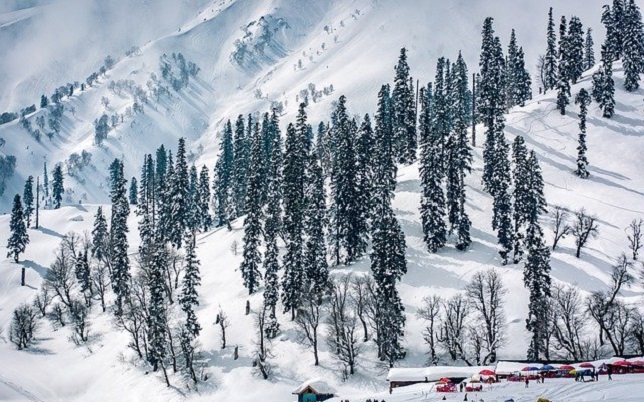Of all the states in India, Kashmir contains the second largest number of Muslims in proportion to the whole population; but unfortunately historical facts that should explain the existence of so many Muslims who are almost entirely of Hindu or Tibetan origin, are very scanty.
Efforts of Muslim Saints to spread Islam in Kashmir
But all the evidence leads us to attribute it on the whole to a long-continued missionary movement inaugurated and carried out mainly by faqeers and derveshes, among whom were Isma’ilian preachers sent from Alamut.1
It is difficult to say when Islamic influence first made itself felt in Kashmir. The first Muslim king of Kashmir, Sadr al-Din2 is said to have owed his conversion to a certain Darwesh Bulbul Shah in the early part of the fourteenth century.
his saint was the only religious teacher who could satisfy his craving for religious truth when, dissatisfied with his own Hindu faith, he looked for a more acceptable form of doctrine.
Towards the end of the same century (in 1388) the progress of Islam was most materially furthered by the advent of Sayyid Ali Hamadani, a fugitive from his native city of Hamadan in Persia, where he had incurred the wrath of Timur.
He was accompanied by 700 Sayyids, who established hermitages all over the country and by their influence appear to have assured the acceptance of the new religion.
Towards the close of the fifteenth century, a missionary, by name Mir Shams al-Din, belonging to a Shiah sect, came from ‘Iraq, and, with the aid of his disciples, won over a large number of converts in Kashmir.
Spread of Islam during Muslim Rule
When under Akbar, Kashmir became a province of the Mughal empire, the Islamic influence was naturally strengthened and many men of learning came into the country.
In the reign of Aurangzeb, the Rajput Raja of Kishtwar was converted by the miracles of a certain Sayyid Shah Farid al-Din and his conversion seems to have been followed by that of the majority of his subjects.3
Spread of Islam in Tibet and Ladakh
To the north and north-east of Kashmir, the provinces of Baltistan and Ladakh are inhabited by a mixed Tibetan race, among whom Islam has been firmly established for several centuries, but the date and manner of its introduction is unknown.
The Muslims of Baltistan tell of four brothers who came from Khurasan and brought about a revival of the faith, but appear to have no tradition regarding the earliest preachers.4
Up to the middle of the nineteenth century Islam appeared to be making progress, but this tendency was counteracted by the encouragement which Maharaja Ranbir Singh gave to the followers of the Buddhist faith.
In Ladakh there are a number of half-castes, called Arghons5, born of Tibetan mothers and Muslim fathers, traders who have come to Leh and persuaded the Tibetan women they marry to accept Islam.
These Arghons are all Muslims and like their fathers marry Tibetan wives.6
Islam has also been carried into Tibet Proper by Kashmiri merchants. Settlements of such merchants are to be found in all the chief cities of Tibet; they marry Tibetan wives, who often adopt the religion of their husbands.7
Islam has made its way into Tibet also from Yunnan,8 and at Suching, on the border of the Szechwan province and Tibet, converts are being won from among the Tibetan inhabitants.9
Islamic influences are also said to have come from Persia10 and from Turkestan.11
References:
1. Khoja Vrttant, p. 141.
2. Or Shams al-Dīn, according to another account, see Muḥ ammad Haydar, p. 433 (n. 2).
3. F. Drew; The Jummoo and Kashmir Territories, pp. 58,155. (London, 1875)
4. Drew, op. cit. p. 359.
5. Yule’s Marco Polo, vol. i. p. 290.
6. Aḥ mad Shāh: Four years in Tibet, pp. 45, 74. (Benares,1906.)
7. Broomhall, p. 206.
8. Mission d’Ollone, pp. 207, 226, 233.
9. Broomhall, p. 206.
10. A. Bastian : Die Geschichte der Indochinesen, p.159. (Leipzig, 1866)
11. R. du M. M., tome i, p. 275. (1907)

